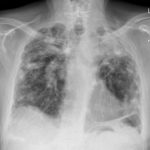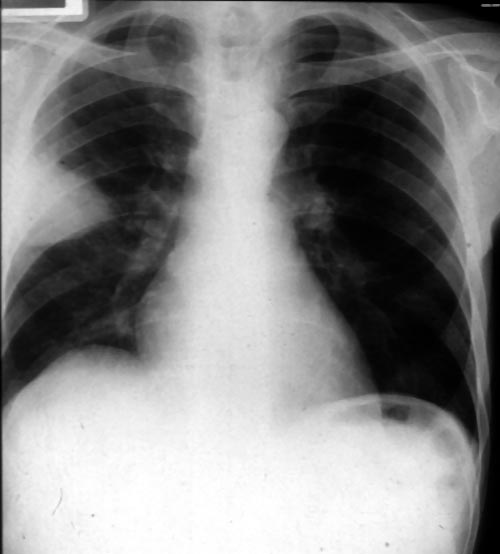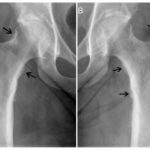Date: 26 November 2013
(Fig 1) Chest radiograph with ‘classical’ appearance of a pulmonary infarction – a wedge-shaped lesion peripherally set against the pleura.
Copyright: n/a
Notes:
His case has been previously reported (Denning DW, Williams AH). Invasive pulmonary aspergillosis diagnosed by blood culture and successfully treated. Br J Dis Chest (1987) 81, 300).
Chest radiograph with ‘classical’ appearance of a pulmonary infarction – a wedge-shaped lesion peripherally set against the pleura. This patient was receiving chemotherapy including corticosteriods, who had had a splenectomy previously presented with fever and right-sided pleuritic chest pain. Blood cultures grew Aspergillus fumigatus and he responded to amphotericin B and flucytosine.
Images library
-
Title
Legend
-
Mr RM is 80 and an ex-coal miner.He developed pneumoconiosis from exposure to coal dust. He also developed rheumatoid arthritis and the combination of this disease and pneumoconiosis is called Caplan’s syndrome.
His chest Xray in early 2015 shows extensive bilateral pulmonary shadowing with solid looking nodules superimposed on abnormal lung fields, contraction of his left lung with an elevated diaphragm and a large left upper lobe aspergilloma, displaying a classic air crescent. His CT scan from mid 2014 demonstrates a large aspergilloma in a cavity on the left, with marked pleural thickening around it, which is partially ‘calcified’ towards its base. Inferiorly on other images,remarkable pleural thickening and fibrotic irregular and spiculated nodules are seen, most partially calcified.
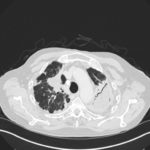 ,
, 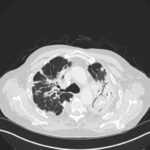 ,
, 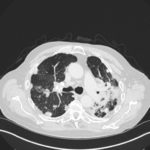 ,
, 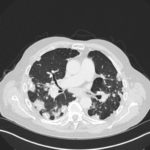 ,
, 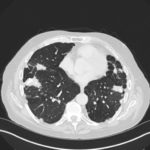 ,
, 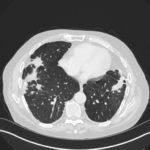 ,
, 